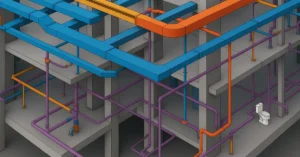The Art of Architectural Storytelling: Communicating Design
Architectural storytelling is more than just presenting designs; it’s about conveying the essence, inspiration, and vision behind architectural projects. As we enter 2024, the role of storytelling in architecture has become increasingly pivotal, shaping how architects communicate their ideas, engage stakeholders, and inspire communities. This article explores the evolving landscape of architectural storytelling, highlighting techniques, technologies, and the impact of narrative in architectural design and communication.
Introduction to Architectural Storytelling
Architectural storytelling bridges the gap between design concepts and audience perception, transforming abstract ideas into compelling narratives. It involves weaving together elements of history, culture, functionality, and aesthetics to create a cohesive narrative that resonates with viewers on an emotional and intellectual level.
The Importance of Storytelling in Architecture
1. Engaging Stakeholders
Effective storytelling captivates stakeholders, including clients, investors, and the public, by providing context and meaning to architectural projects. It fosters empathy, understanding, and support for design decisions, leading to stronger collaborations and project outcomes.
2. Inspiring Design Creativity
Storytelling inspires architects to explore diverse narratives, themes, and metaphors that inform design concepts. It encourages creative expression and innovative thinking, guiding architects towards solutions that reflect cultural relevance and societal aspirations.
3. Educating and Informing Communities
Architectural storytelling educates the public about the significance of architecture in shaping urban environments and cultural identities. It promotes awareness of sustainable practices, historical preservation, and the transformative power of design in enhancing quality of life.
Techniques for Effective Architectural Storytelling
1. Narrative Structure
Developing a narrative structure involves identifying key elements such as protagonists (designers, users), settings (urban context, natural surroundings), conflicts (design challenges, societal needs), and resolutions (design solutions, community benefits). This structure provides a cohesive framework for storytelling.
2. Visual Storytelling
Visual storytelling utilizes renderings, diagrams, sketches, and digital animations to convey design intent and spatial experiences. High-quality visuals enhance audience engagement and facilitate understanding of architectural concepts, especially for complex projects and urban planning initiatives.
3. Contextual Integration
Integrating historical, cultural, and environmental contexts enriches architectural narratives, connecting designs to their surroundings and heritage. Architects draw inspiration from local traditions, materials, and landscapes to create narratives that resonate with community values and aspirations.
Technology and Innovation in Architectural Storytelling
1. Virtual Reality (VR) and Augmented Reality (AR)
VR and AR technologies immerse stakeholders in virtual environments, allowing them to experience architectural designs in 3D. These tools simulate spatial relationships, lighting effects, and user interactions, enabling architects to solicit feedback and refine designs early in the process.
2. Interactive Presentations
Interactive presentations leverage multimedia platforms, interactive websites, and mobile applications to engage diverse audiences and stakeholders. Users can explore architectural projects through interactive tours, videos, and virtual walkthroughs, fostering a deeper appreciation for design concepts and functionality.
Case Studies: Exemplars of Architectural Storytelling
1. The High Line, New York City
The transformation of the High Line, an abandoned railway line, into a vibrant urban park, exemplifies effective architectural storytelling. Designers integrated historical narratives, ecological restoration, and community engagement to revive a derelict infrastructure into a celebrated public space.
2. Sustainable Architecture in Copenhagen
Copenhagen’s commitment to sustainable architecture is communicated through projects like the BLOX building. Architectural storytelling emphasizes energy-efficient design, public accessibility, and social sustainability, aligning with Denmark’s goals for carbon neutrality and urban resilience.
Future Trends and Challenges in Architectural Storytelling
1. Multisensory Experiences
Future trends in architectural storytelling will focus on multisensory experiences that engage sight, sound, touch, and even scent. Immersive technologies and interactive installations will enable architects to create holistic narratives that evoke emotional responses and enhance user experiences.
2. Ethical and Inclusive Narratives
Architectural storytelling will increasingly emphasize ethical considerations and inclusive narratives that address social justice, equity, and accessibility. Architects will advocate for design solutions that empower marginalized communities, promote cultural diversity, and foster inclusive urban environments.
Conclusion: Harnessing the Power of Architectural Storytelling
As architects navigate the complexities of urbanization, sustainability, and technological innovation in 2024 and beyond, storytelling remains a potent tool for articulating design visions, fostering community dialogue, and shaping the built environment. By mastering the art of architectural storytelling, architects can transcend functional utility to create enduring spaces that inspire, resonate, and enrich the human experience.
If you’re interested in learning more about architecture firms in Europe, check out this comprehensive list of the top 50 firms compiled by Archgyan. From innovative startups to long-established industry leaders, this list has it all. Take a look and discover some of the most inspiring and influential architecture firms in Europe today.
If you’re interested in architecture and want to learn more about this amazing field, subscribe to our podcast on youtube
For more SketchUp tutorials, head to https://www.sketchupguru.com










